Saturday, May 24, 2025
Today, Jane and I were joined by a couple of feline visitors as we sipped our morning coffee in the suite. They were noticeably braver than on previous days—bold enough to creep in for a look around, but still skittish enough to run away the moment we made eye contact. Classic cat behavior: equal parts curiosity and cowardice. Once we made sure our shy guests had taken their leave (probably to judge us from a safe distance), we headed out ourselves in search of breakfast.
——Feline Visitors ——
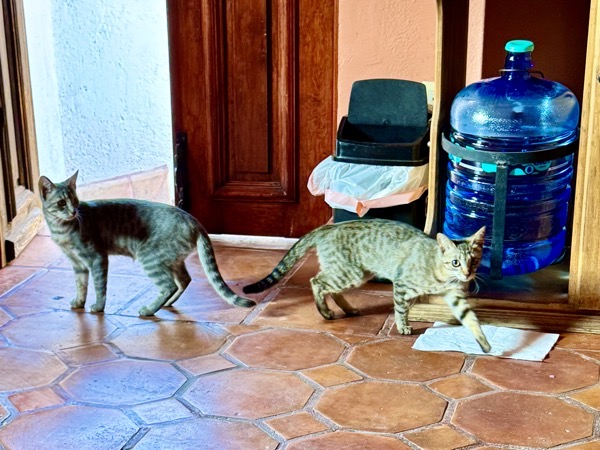
A few blocks away, we stumbled upon an open bakery boasting a wide selection of freshly baked pastries. We carefully picked out a few to enjoy for breakfast, then made our way to a shady little park nearby, where we found a bench and savored our sweet treats in the quiet morning air.
Afterward, Jane and I split up to pursue our own morning adventures—she set off in search of a salon for a much-needed haircut, while I made my way to the Museo de las Momias (aka the “Mummy Museum”), about a mile away, for a dose of the macabre.
—— Thoughtful Pastry Selection ——
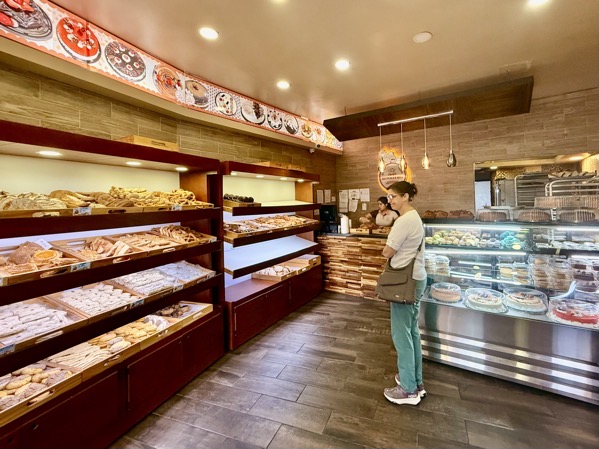
The Guanajuato Mummy Museum is a one-of-a-kind and iconic attraction, famous not only throughout the city but across Mexico. Even so, I was the only one in our group of four curious—or perhaps crazy—enough to pursue this eerie and unsettling adventure. Throughout the city, distinctive signs with white arrows on a deep blue background—a departure from the city’s typical green street signs—clearly point the way to the Momias, making it surprisingly easy to locate this extraordinary and lurid destination.
The mummies themselves originated from bodies buried in the Santa Paula Cemetery during the mid-1800s, many of whom tragically died during a cholera outbreak. Thanks to the region’s dry climate, high mineral content in the soil, and natural underground ventilation, some of these bodies underwent natural mummification rather than decomposing. When families couldn’t continue paying the required burial tax, cemetery workers exhumed remains expecting skeletal remains but instead uncovered these remarkably preserved bodies. Their eerie preservation sparked widespread public fascination, ultimately leading to the establishment of El Museo de las Momias de Guanajuato in 1969.
Over time, these mummies have become embedded in Mexican popular culture, inspiring cult films like Santo vs. The Mummies of Guanajuato (1970) and haunting literary works such as Ray Bradbury’s “The Next in Line.” More profoundly, they reflect Mexico’s complex and intimate relationship with death, resonating deeply with the traditions and symbolism of El Día de los Muertos (Day of the Dead).
Upon entering the museum, I walked down a long corridor and, despite my limited Spanish, easily purchased a senior ticket for 25 pesos (about $1.30). I returned down the opposite side of the hall, presented my ticket, and stepped into another world.
The dimly lit room was lined with glass cases illuminated by fluorescent lights. Each case contained two shelves, each holding a reclining mummy. The sight was both unsettling and captivating—some looked peaceful, others appeared twisted in pain, some were clothed, but most were not. I moved through numerous rooms housing over 100 naturally mummified bodies, some with stories and histories carefully presented alongside.
One poignant exhibit, called Angelitos, displayed infant mummies dressed in traditional clothing, representing the “little angels” of Mexican culture. One of these tiny souls was buried clutching a small broom, presumably a cherished toy or personal item. Another room featured the world’s smallest mummy—a fetus along with its mummified pregnant mother. Yet another area was dedicated to individuals who had met untimely or violent deaths.
Walking among the dead was a haunting but deeply captivating experience. Still, I lingered only briefly as the ghoulish displays weighed on me, feeling a twinge of relief when I finally spotted the exit and emerged once again into the bright Mexican sunshine and vibrant city streets.
—— The Mummy Museum ——
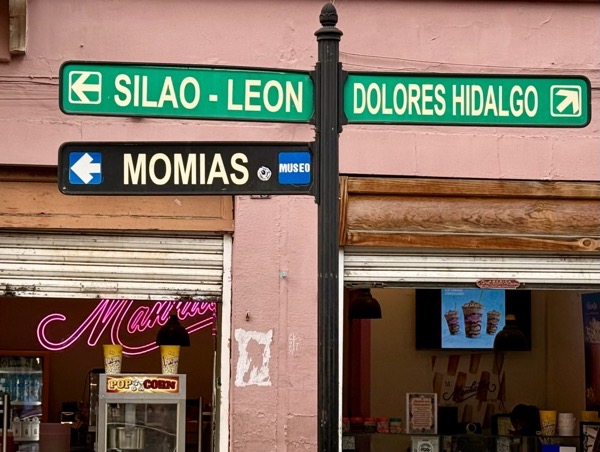
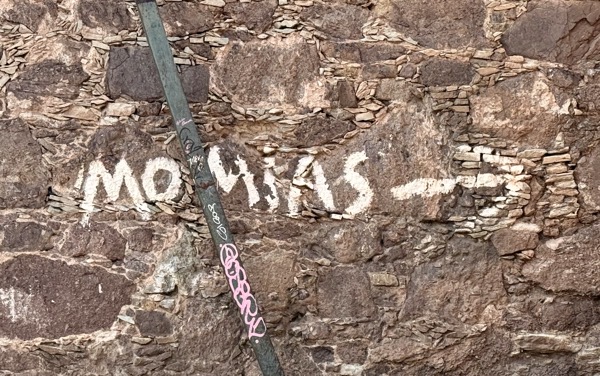
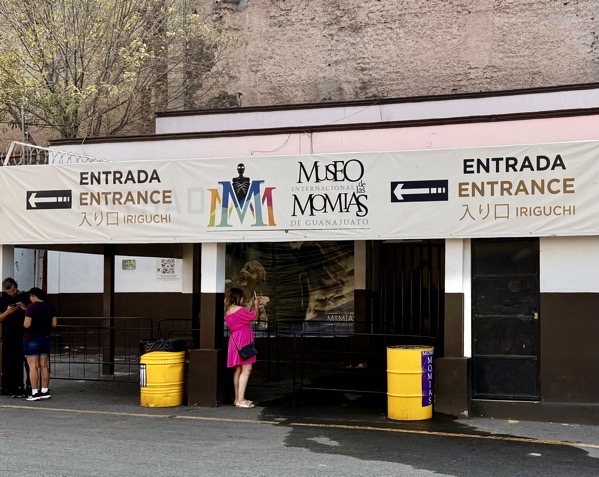
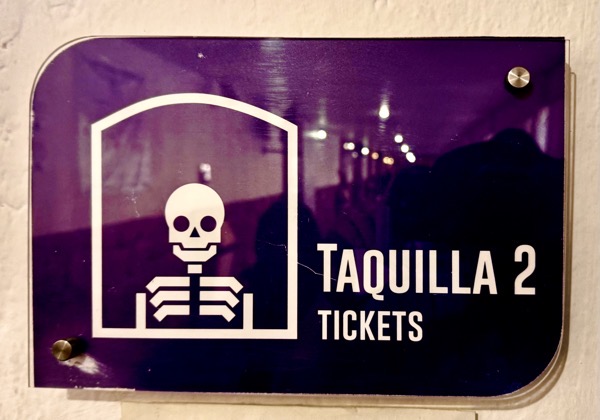
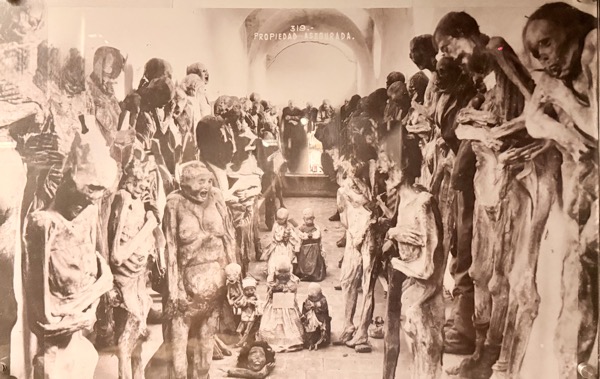
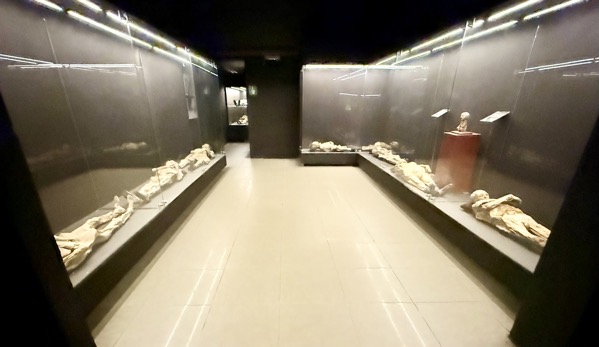
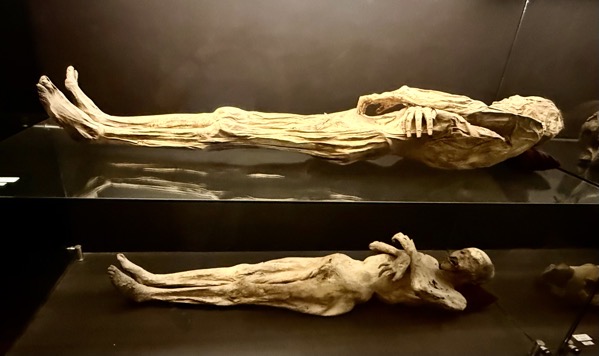


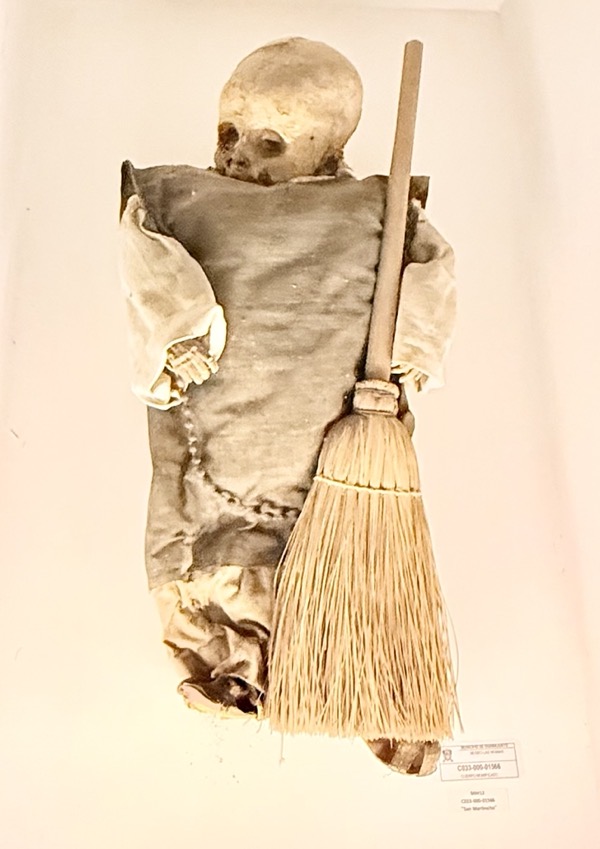
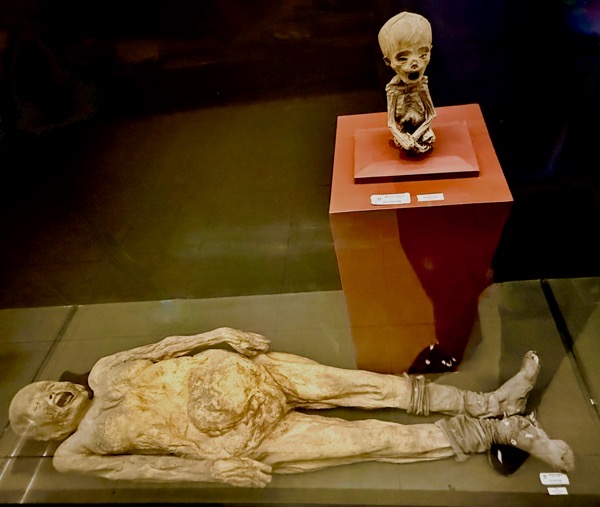
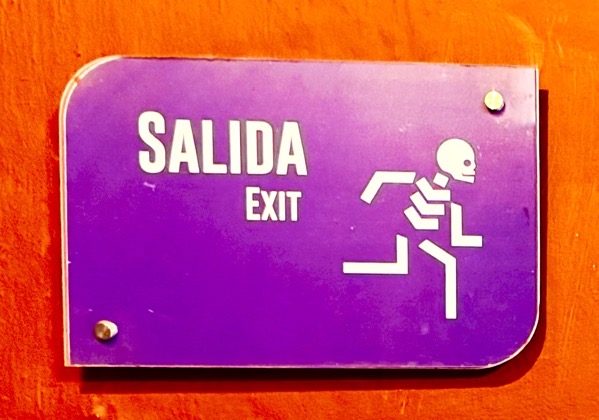
After leaving the Mummy Museum, I decided to backtrack a bit. Along the way, I passed a large street mural—a haunting graveyard scene complete with looming mummies that looked like they might step off the wall at any moment. In front of it sat a bench… and on that bench, a very still, very reclined human figure. I didn’t dare stop to check if it was breathing, casually whistling as I walked passed.
——— Whistling past the Graveyard ———

Eventually, I located Jane’s position using the “Find My Wife” app (highly recommended for all husbands) and began making my way toward her. I soon realized she was actually heading in my direction—our distance was shrinking much faster than my pace could account for. Sure enough, we soon spotted each other and reunited on the street.
While I had been exploring mummies, Jane had discovered a nearby hair salon named Passion Nail Studio & More. They couldn’t take her immediately, but offered her a 10:00 a.m. appointment. She’d spent the last half hour wandering the area and was now en route to the salon.
With her heading off for a haircut (which, by the way, cost a very reasonable $18), I made my way back to our Airbnb to regroup.
—— The Hair Salon – Before & After ——
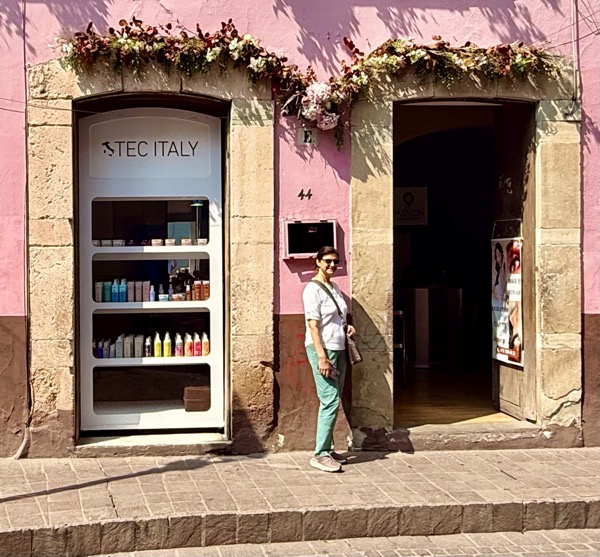

Later, Jane returned to the suite with a stylish haircut, and we relaxed until 1 p.m., when we headed out to meet Jeff and Comeka for lunch at the Hotel Embajadoras (Embassy Hotel) restaurant. We sat at a table on the covered outdoor terrace, enjoying the fresh air and shaded comfort.
Jane and I both enjoyed enfrijoladas con queso, served with warm, freshly baked bread, and we each had a naranjada con agua mineral—a refreshing blend of orange juice and sparkling water. After the meal, we lingered at the table, enjoying good conversation as Jeff and Comeka shared more about their hopes and plans for relocating to Mexico.
——— Lunch at the Embassy Hotel ———
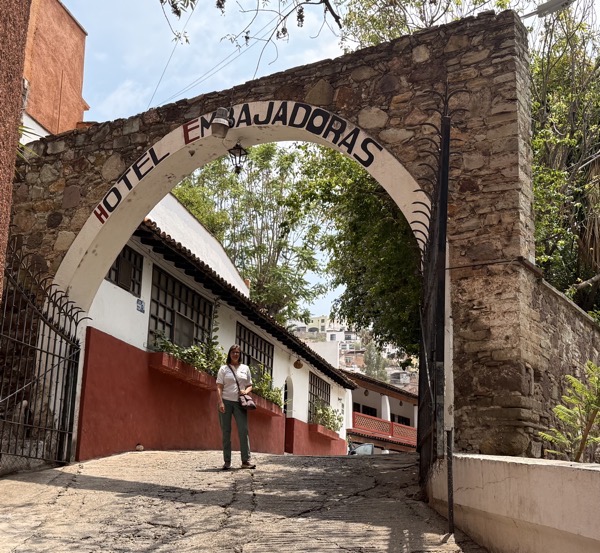
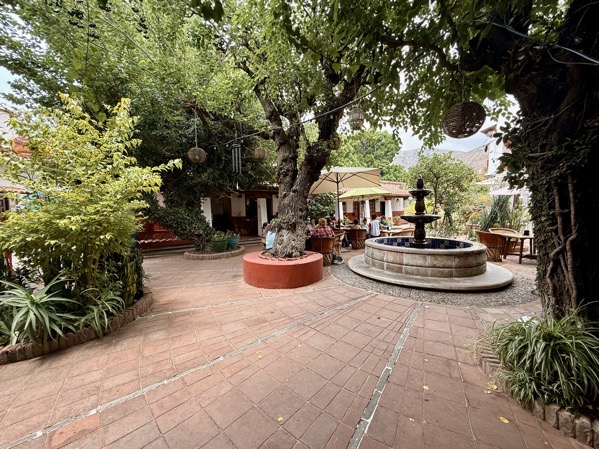

After lunch, we took a short walk behind the Teatro Juárez, which we had visited the night before, and soon found the Guanajuato Funicular. We bought our tickets and boarded a glass-walled cabin, which carried us up the hillside in just a few minutes, offering sweeping panoramic views of the city along the way.
At the top, we passed through a covered gallery lined with small shops before emerging near the Monumento al Pípila—a towering statue honoring the spirit of resistance, bravery, and sacrifice embodied by a humble local miner who played a pivotal role in Mexico’s struggle for independence from Spanish rule.
From there, we wandered among several lookout points, each offering stunning bird’s-eye views of Guanajuato’s densely packed, colorful houses, its maze of winding streets and alleyways, and the surrounding mountains that cradle the city. We easily spotted the Teatro Juárez, the yellow-domed Basilica, and the grand façade of the University of Guanajuato’s main building—iconic landmarks of the city’s historic core.
After soaking in the views and satisfying our wanderlust, we retraced our steps and descended once again in the funicular cabin, returning to the vibrant heart of Guanajuato’s historic center.
—— Riding the Guanajuato Funicular ——
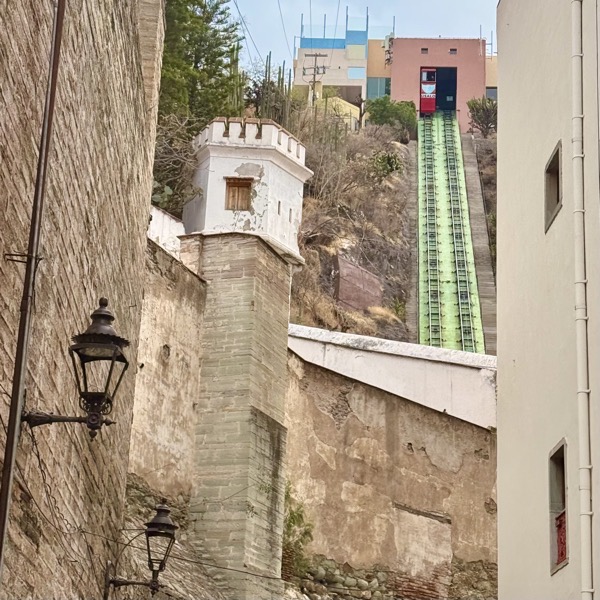

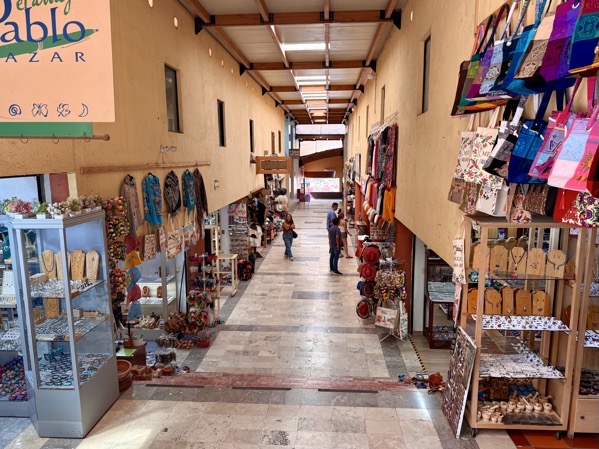
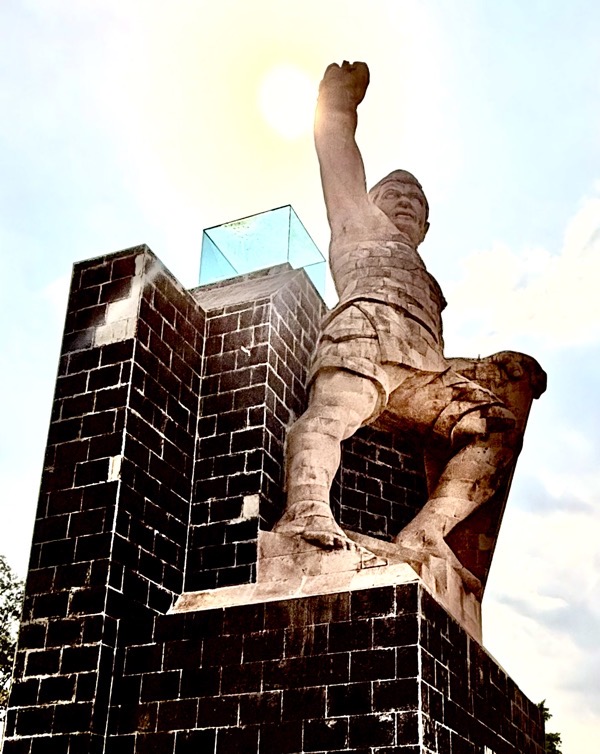
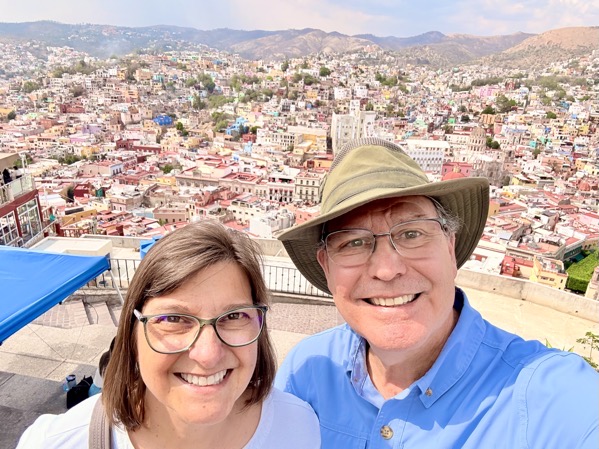
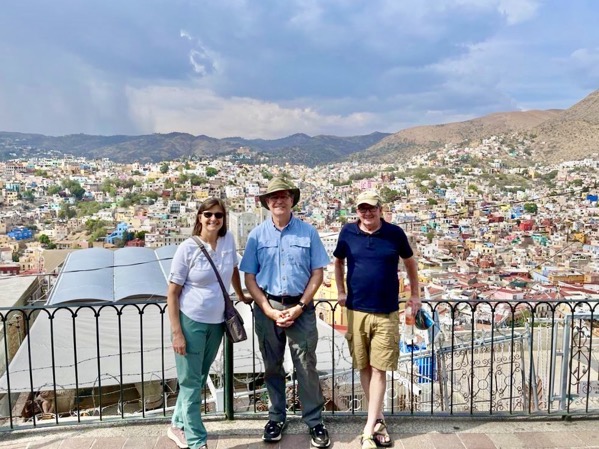
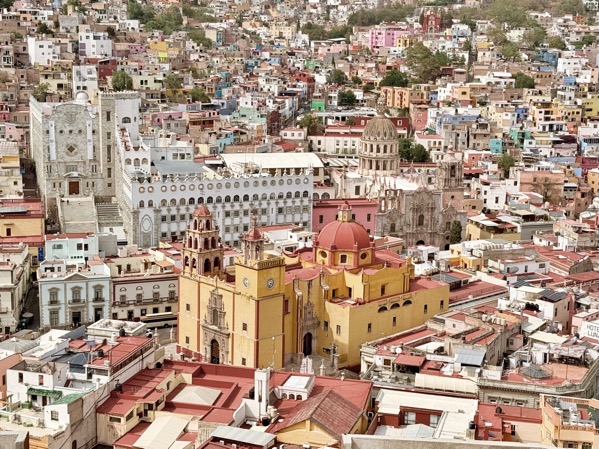
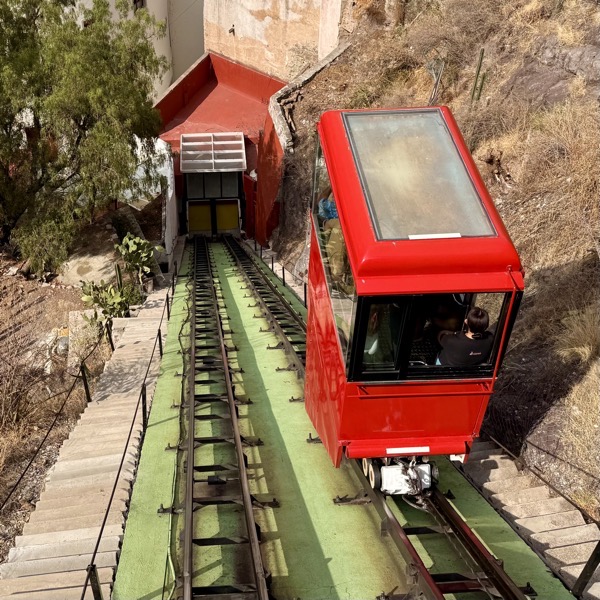
After disembarking from the funicular, we made our way to the University of Guanajuato to get an up-close look at its iconic main building. To our surprise, we had arrived on graduation day. Clusters of students in caps, gowns, and colorful sashes were posing proudly in front of the grand façade, while their families and friends captured the joyful moment with photos.
The festive atmosphere stirred up memories for me—of many such graduation days spent at N.C. State University before I retired. It was both heartwarming and nostalgic to witness such a milestone from the the academic world of another country.
Before heading back to our suites for a well-earned rest, we also took a quick peek into the university bookstore, adding one more small discovery to an already full day.
—— University of Guanajuato ——
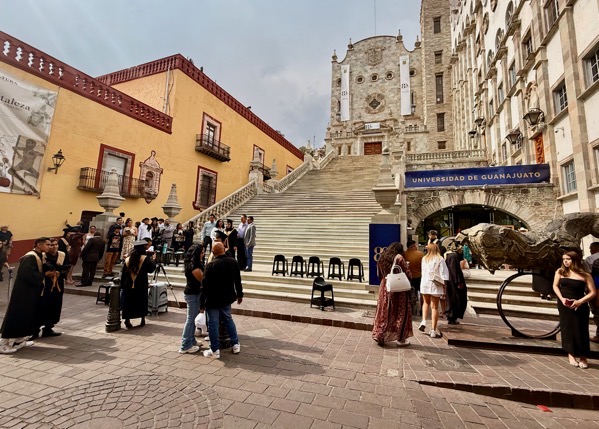
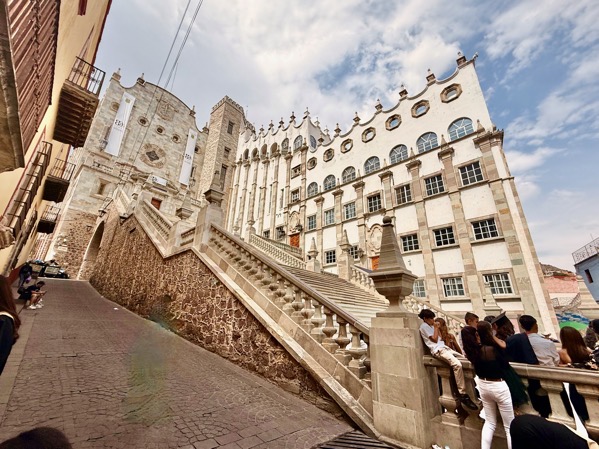
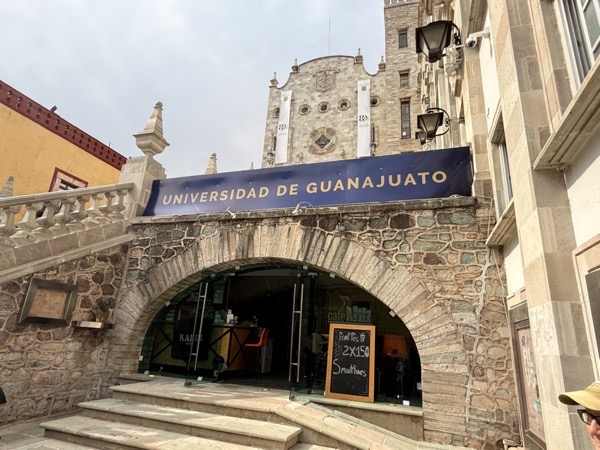
After a bit of rest, Jane and I set out to grab a few snacks for dinner—our late, hearty lunch had kept us full most of the day. At a nearby OXXO, we picked up a “nutritious” combo: beer, a pack of mixed nuts, and a comically large bag of Cheetos. (Don’t ask me why—it just felt right in the moment.)
We returned to the Airbnb and joined Jeff and Comeka at a table on the upper terrace, taking in the last golden views of this stunning city. As the sun dipped below the horizon and the sky slowly darkened, we shared our snacks, sipped our drinks, and savored our final evening together.
At one point, we watched a drone lift off from a nearby hillside, glide smoothly across the cityscape, and then return to its launch point. Conversation flowed easily as we revisited the houses we had toured the day before, weighing their pros and cons, and talking through the next steps in their plan to relocate here. Too soon, we had to terminate our discourse and headed back to our respective suites to pack and prepare for tomorrow’s early departures.
——— Final Evening on the Terrace ———
